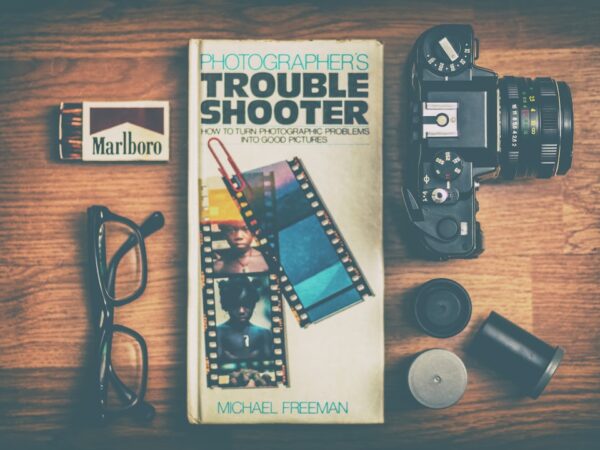
Top 10 Most Disturbing Banned Movies Around the World That Will Leave You Speechless
Movies have always been a powerful medium for storytelling and artistic expression. However, there are some films that push the boundaries of what is considered acceptable and provoke strong reactions from audiences and authorities alike. These controversial movies often find themselves banned or heavily censored due to their explicit content, disturbing themes, or political implications.
The reasons for banning a movie can vary depending on the country and its cultural, religious, or political values. Some films are banned for their explicit violence or sexual content, while others are banned for their political or social commentary that challenges the status quo. In some cases, movies are banned to protect the public from potentially harmful or offensive material.
Key Takeaways
- Banned movies have always been a controversial topic in the film industry.
- “A Serbian Film” is a shocking horror movie that has been banned in many countries due to its extreme violence and sexual content.
- “Cannibal Holocaust” is considered the most controversial film of all time due to its graphic depictions of violence and animal cruelty.
- “Martyrs” is a French horror movie that features extreme violence and torture scenes.
- “The Human Centipede” is a disturbing tale of medical experimentation that has been banned in several countries.
- “Irreversible” is a brutal tale of rape and revenge that has been banned in some countries due to its graphic content.
- “The Interview” sparked political controversy due to its depiction of North Korea’s leader.
- “Salò, or the 120 Days of Sodom” is a disturbing tale of fascist Italy that has been banned in several countries.
- “Baise-Moi” is a French movie that explores themes of violence and sexuality and has been banned in some countries.
The Shocking Horror of “A Serbian Film”
“A Serbian Film” is a Serbian horror film directed by Srdjan Spasojevic. The film follows the story of a retired porn star who agrees to participate in an art film, only to find himself involved in a series of increasingly disturbing and violent acts. The film gained notoriety for its extreme violence, including scenes of rape, necrophilia, and child abuse.
The reasons for the ban on “A Serbian Film” are clear – the explicit and graphic nature of the violence depicted in the film is considered too disturbing and offensive for public consumption. The film was banned in several countries, including Australia, New Zealand, and Norway. It also faced heavy censorship in other countries where it was released.
The controversy surrounding “A Serbian Film” stems from its portrayal of extreme violence and its exploration of taboo subjects. While some argue that the film is a critique of the porn industry and society’s obsession with violence, others believe that it goes too far in its depiction of graphic violence and crosses the line into exploitation.
“Cannibal Holocaust”: The Most Controversial Film of All Time
“Cannibal Holocaust” is an Italian horror film directed by Ruggero Deodato. The film tells the story of a documentary crew who go missing in the Amazon rainforest while filming a documentary about indigenous tribes. The film is infamous for its graphic violence, including scenes of real animal cruelty and the brutalization of human characters.
The reasons for the ban on “Cannibal Holocaust” are numerous. The film’s explicit violence and animal cruelty were deemed too disturbing and offensive for public consumption. It was banned in several countries, including Australia, Italy, and the United Kingdom. In some cases, the film’s director was even arrested and charged with murder due to rumors that the actors in the film had been killed.
Despite its controversial nature, “Cannibal Holocaust” had a significant impact on the horror genre. It is often credited with popularizing the found footage style of filmmaking, which has since been used in films such as “The Blair Witch Project” and “Paranormal Activity.” The film’s graphic violence and shocking content also influenced subsequent horror films, pushing the boundaries of what was considered acceptable in the genre.
The Graphic Violence of “Martyrs”
| Category | Metric |
|---|---|
| Box Office | 3.9 million |
| Runtime | 99 minutes |
| Director | Pascal Laugier |
| Rating | R (for disturbing/severe violence and gore, a scene of sexuality, and some language) |
| Release Date | September 3, 2008 (France) |
| Production Company | Wild Bunch |
“Martyrs” is a French-Canadian horror film directed by Pascal Laugier. The film follows the story of a young woman who seeks revenge on those who kidnapped and tortured her as a child. The film is known for its extreme violence, including scenes of torture and self-mutilation.
The reasons for the ban on “Martyrs” are similar to those of other banned films – its explicit violence and disturbing content were deemed too graphic and offensive for public consumption. The film was banned in several countries, including Australia, New Zealand, and Germany.
Despite its controversial nature, “Martyrs” has been praised by some critics for its exploration of themes such as trauma, revenge, and the nature of suffering. It has been described as a thought-provoking and challenging film that pushes the boundaries of the horror genre. However, others argue that its extreme violence and graphic content overshadow any artistic merit it may have.
“The Human Centipede”: A Disturbing Tale of Medical Experimentation
“The Human Centipede” is a Dutch horror film directed by Tom Six. The film tells the story of a deranged surgeon who kidnaps three people and surgically connects them mouth to anus to create a “human centipede.” The film is known for its disturbing premise and graphic scenes of body horror.
The reasons for the ban on “The Human Centipede” are similar to those of other banned films – its explicit violence and disturbing content were deemed too graphic and offensive for public consumption. The film was banned in several countries, including Australia, New Zealand, and the United Kingdom.
Despite its controversial nature, “The Human Centipede” has had a significant impact on the horror genre. It spawned two sequels and has become a cult classic among horror fans. The film’s graphic scenes of body horror and its exploration of themes such as medical ethics and the limits of human endurance have influenced subsequent horror films.
“Irreversible”: A Brutal Tale of Rape and Revenge

“Irreversible” is a French thriller film directed by Gaspar Noé. The film tells the story of a woman who is brutally raped and beaten, and her boyfriend’s quest for revenge. The film is known for its graphic depiction of violence, including a nine-minute long rape scene.
The reasons for the ban on “Irreversible” are similar to those of other banned films – its explicit violence and disturbing content were deemed too graphic and offensive for public consumption. The film was banned in several countries, including Australia, New Zealand, and Singapore.
“Irreversible” has been praised by some critics for its innovative storytelling and its exploration of themes such as time, fate, and the consequences of violence. However, others argue that its graphic depiction of violence, particularly the rape scene, is exploitative and unnecessary.
The Political Controversy of “The Interview”
“The Interview” is an American political satire film directed by Seth Rogen and Evan Goldberg. The film follows the story of two journalists who are recruited by the CIA to assassinate North Korean leader Kim Jong-un. The film sparked international controversy and was banned in North Korea.
The reasons for the ban on “The Interview” are political in nature. The North Korean government condemned the film as an act of terrorism and threatened retaliation if it was released. The controversy surrounding the film led to cyberattacks on Sony Pictures, the film’s distributor, and raised questions about freedom of speech and censorship.
Despite the controversy, “The Interview” was eventually released in a limited number of theaters and through online streaming platforms. It received mixed reviews from critics, with some praising its humor and satire, while others criticized it for its crude humor and lack of subtlety.
“Salò, or the 120 Days of Sodom”: A Disturbing Tale of Fascist Italy
“Salò, or the 120 Days of Sodom” is an Italian-French horror film directed by Pier Paolo Pasolini. The film is based on the book “The 120 Days of Sodom” by the Marquis de Sade and tells the story of four fascist libertines who kidnap a group of young men and women and subject them to a series of sadistic sexual and violent acts.
The reasons for the ban on “Salò, or the 120 Days of Sodom” are similar to those of other banned films – its explicit violence and disturbing content were deemed too graphic and offensive for public consumption. The film was banned in several countries, including Australia, New Zealand, and the United Kingdom.
“Salò, or the 120 Days of Sodom” is often regarded as one of the most controversial and disturbing films ever made. It has been praised by some critics for its political and social commentary, while others argue that its explicit violence and sexual content overshadow any artistic merit it may have.
The Dark and Mysterious World of “Baise-Moi”
“Baise-Moi” is a French crime thriller film directed by Virginie Despentes and Coralie Trinh Thi. The film follows the story of two women who go on a violent and sexually explicit rampage after being raped and abused. The film is known for its graphic scenes of violence and explicit sex.
The reasons for the ban on “Baise-Moi” are similar to those of other banned films – its explicit violence and sexual content were deemed too graphic and offensive for public consumption. The film was banned in several countries, including Australia, New Zealand, and Singapore.
“Baise-Moi” has been praised by some critics for its feminist themes and its exploration of female empowerment through violence. However, others argue that its graphic scenes of violence and explicit sex are exploitative and gratuitous.
The Impact of Banned Movies on Society and Culture
Banned movies have always been a source of controversy and debate. They push the boundaries of what is considered acceptable in society and challenge our notions of art, morality, and freedom of expression. While some argue that these films should be banned to protect the public from potentially harmful or offensive material, others believe that censorship limits artistic freedom and stifles creativity.
The impact of banned movies on society and culture is complex. On one hand, these films can provoke important discussions about taboo subjects, challenge societal norms, and push the boundaries of artistic expression. On the other hand, they can also perpetuate harmful stereotypes, glorify violence, and exploit vulnerable individuals.
In conclusion, the world of banned movies is a controversial and complex one. These films often push the boundaries of what is considered acceptable and provoke strong reactions from audiences and authorities alike. While some argue that these films should be banned to protect the public from potentially harmful or offensive material, others believe that censorship limits artistic freedom and stifles creativity. The impact of banned movies on society and culture is complex, with both positive and negative consequences. It is important to engage in thoughtful discussions and debates about these films to better understand their impact on society and culture.
FAQs
What is the article about?
The article is about the top 10 most disturbing movies that have been banned in various countries around the world.
What are some of the movies on the list?
Some of the movies on the list include “A Serbian Film,” “Cannibal Holocaust,” “The Human Centipede 2,” and “Salò, or the 120 Days of Sodom.”
Why were these movies banned?
These movies were banned due to their graphic and disturbing content, which includes scenes of extreme violence, gore, sexual violence, and other disturbing themes.
Which countries have banned these movies?
These movies have been banned in various countries around the world, including Australia, New Zealand, Germany, and the United Kingdom.
Are these movies available to watch anywhere?
While these movies may be banned in certain countries, they may still be available to watch in other countries or through online streaming services.
What is the impact of these movies on society?
These movies have sparked debates about censorship, artistic expression, and the effects of violent and disturbing media on society. Some argue that these movies should be banned to protect viewers from harmful content, while others argue that censorship limits artistic freedom and expression.













